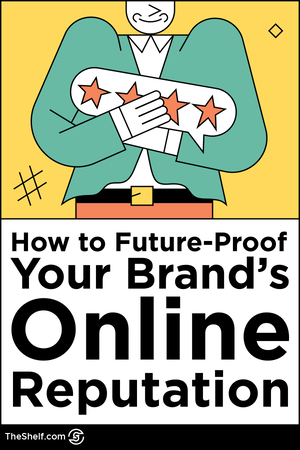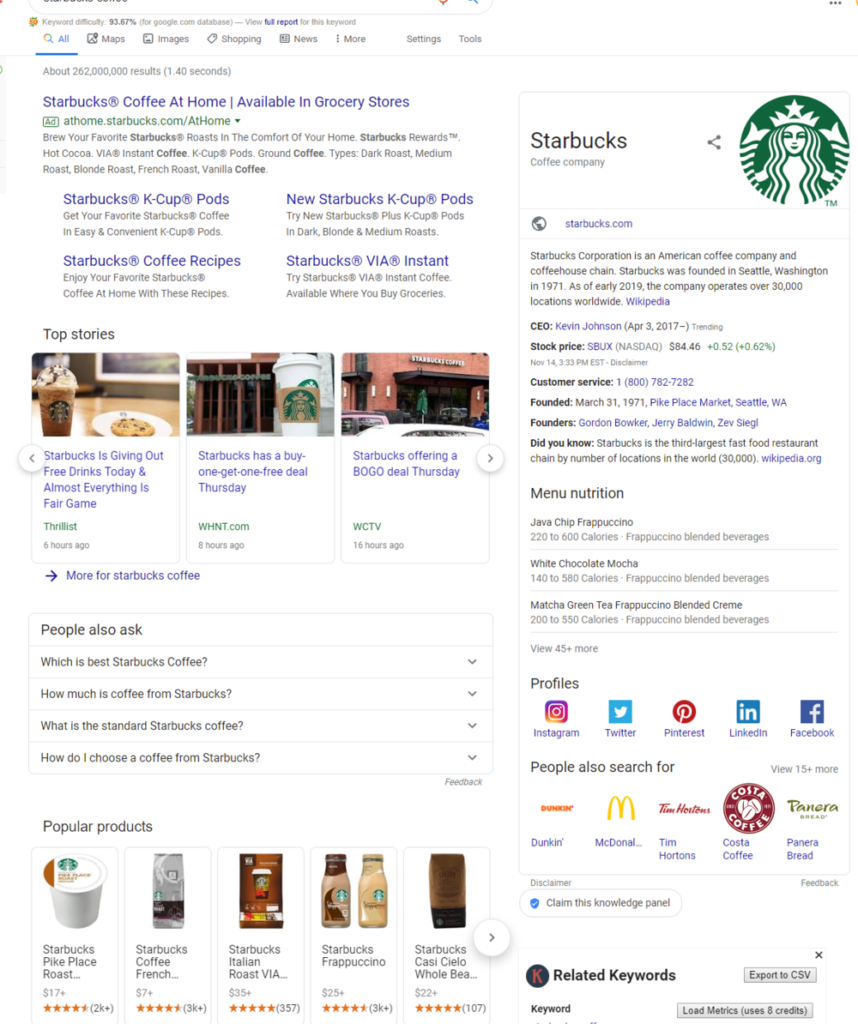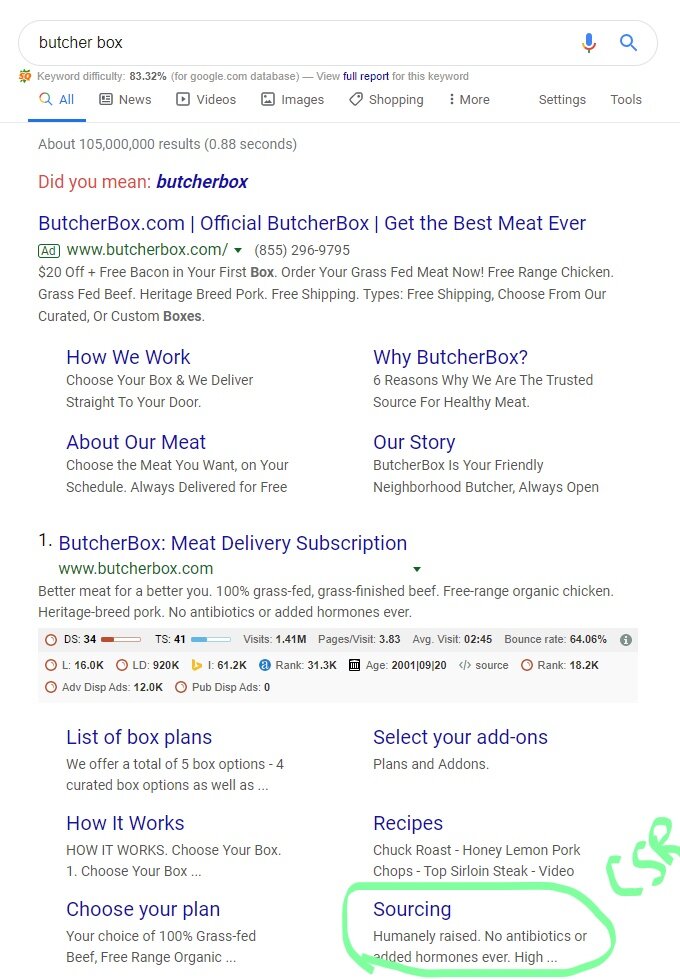Consumers are looking to online search results with increasing regularity to find new brands, products, and services — and to influence or support their perception of the outside world. In fact, Google searches in particular account for 94 percent of total organic web traffic.
Not only do brands today have to fight for visibility online (both for your company and your individual products), but you also face the challenge of monitoring what turns up in branded search results. Contrary to popular belief, what shows up in the search results about your brand aren’t always controlled by your brand — and bad reviews and other negative content can have a very HUGE impact on your company’s bottom line.
So, how can you protect your brand? Let’s take a look at three high-impact strategies to future-proof your company’s online reputation.

Expand Your Brand’s Online Presence
As a marketer, it’s pretty much on you to make that all-important concerted effort to establish your brand’s owned online properties This includes domains, as well as the platforms where you control the messaging – the places you publish owned media and promote paid and earned media. These assets act as a digital bulwark against bad press, comparison sites and other negative third-party brand mentions that can creep into your search results.
If your company’s search landscape is more of a vacuum than a vault (and you’d be surprised how often that’s the case), you’ll face serious headwinds in the event of a brand crisis.
Consider Boeing’s tone-deaf response to real customer and market concern over its benched 737 Max airplanes. Negative news can easily populate a branded search when you haven’t taken control of your brand’s narrative.
According to Jonas Sickler of ReputationManagement.com, “When the press gets ahold of a juicy story, they often publish it while it’s hot.” In the case of Boeing, response from officials and recent legal issues perpetuated the news cycle, injecting negative article after negative article into the airline’s branded search results.
Sickler continues, “Even if a story is eventually discredited, it could remain online indefinitely. And the damage is further amplified when false stories become syndicated hundreds or thousands of times.”
While most companies certainly can’t predict a PR blunder, they can be proactive about securing the first page of Google results with their own branded channels. So, it’s vital to your brand that you make the effort to claim all of your branded web properties and domains.
All of them? Yep. And all the variations, too. This may seem a bit gratuitous, but in addition to securing the core domain, you should also grab up the domain names with common variations or misspellings, a necessary step in order to avoid online trolls and spoofed accounts.
Companies should also branch out and establish branded blogs, social media channels, and publish on platforms like Medium, LinkedIn, and other thought leadership platforms. This way, a brand ensures its owned content has more traction in branded search results. Want an example of a brand with a Teflon reputation? Look no further than Starbucks. The results captured below came from the search term “Starbucks coffee”.

We talk about Starbucks a lot because of the amazing UGC machine that revolves around this brand. The company has endured more than its fair share of crises over the years. Yet, the brand’s search results are filled with positive content that ranges from influencer product promotions to company growth news.
Look at the sheer number of reviews that have been left about Starbucks products… and look at the overall scores! Four-star and five-star reviews across the board.
Be Proactive. Generate Positive Buzz.
Positive reviews and mentions of a brand are an invaluable way to combat negative content. 91 percent of consumers trust an online review as much as a personal recommendation and read an average of 10 reviews before establishing trust in a business. Review and comparison sites in branded search results make positive reviews a catalyst for future business. And don’t forget — not all press coverage has to be negative. If a brand has a positive online reputation, it makes sense they’d start to generate brand mentions, links, and shares.
There are many things a company can do to help increase positive coverage around their brand. Successful brands like Starbucks work extensively in corporate social responsibility (CSR), most notably with their pledge to hire 25,000 veterans by 2025 which they actually hit six years ahead of schedule.
CSR helps brands establish a bond of trust with consumers, and can generate just as much good press as the other side of the coin. Butcherbox.com is a brand that nutrition and fitness influencer, Thomas DeLauer talks about frequently. And listening to him, the one takeaway you may get without ever having to go to the Butcherbox website is that it’s responsibly sourced meat – grass-fed and grass-finished. That said, what do you notice about the search results for Butcherbox? Sourcing is a featured section on the brand’s website.

And a blog post or news article from a high-authority site lends authority and credibility to branded search results.
Focus on Brand Safety
Many marketers and ad agencies purchase ad-media based on specific demographics, rather than site theme or content. So, it can be a little tough to filter out sites whose content could damage a brand’s online reputation.
Brand safety refers to best practices aimed at keeping a brand’s reputation safe throughout an online ad campaign. As you can imagine, brand safety is one of the huge factors that kept certain brands – and entire industries – from leveraging influencer marketing.
For instance, we’ve talked in detail about the challenges luxury brands have faced as it relates to maintaining elite status when social media’s primary selling point is that it makes everything accessible, or at least social makes it seem that way.
Brands are marketers are always on the lookout for risky content placed alongside ad media, regardless of the platform. Brands have to define acceptable levels of risk, and develop a content verification process through blacklisting, whitelisting, and page-level scrutiny.
Vivoom CEO Katherine Hayes stated in a 2018 Forbes article that “Despite the amount of time and money companies devote to growing their brand, few are taking the same precautions to protect their brands. And the ones that do, aren’t doing it particularly well.”
Hayes went on to name JP Morgan Chase as a notable example — the banking giant went from advertising on 400,000 sites per month to just 5,000 after discovering their ads were running alongside extremist web content.
More brands than ever are investing in influencer marketing, programmatic advertising, and user-generated content (UGC). That means stringent brand safety and asset management protocols are gonna be super-important to ensure that brand reputation and brand trust don’t fall by the wayside.
Conclusion
The bottom line is, companies need to actively monitor their online reputations. For brands, it’s not vain to Google yourself, it’s smart business. Don’t miss the opportunity to take control of your brand’s own narrative because the content that shows up about your brand can create long-term issues that impact the way consumers perceive your company as they move further down the purchase funnel. Brands must commit to building out a healthy presence on their owned channels.




